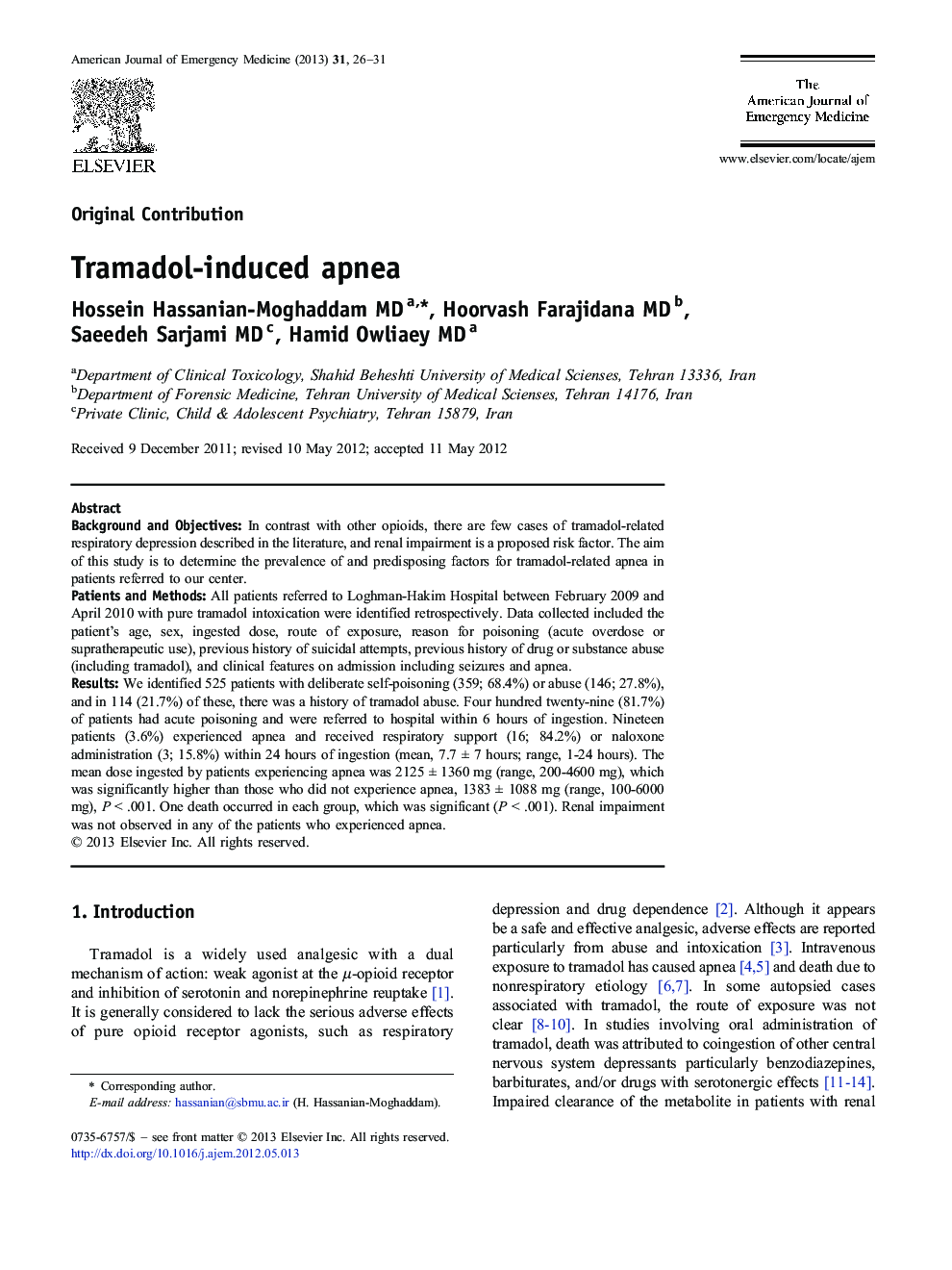| Article ID | Journal | Published Year | Pages | File Type |
|---|---|---|---|---|
| 3224133 | The American Journal of Emergency Medicine | 2013 | 6 Pages |
Background and ObjectivesIn contrast with other opioids, there are few cases of tramadol-related respiratory depression described in the literature, and renal impairment is a proposed risk factor. The aim of this study is to determine the prevalence of and predisposing factors for tramadol-related apnea in patients referred to our center.Patients and MethodsAll patients referred to Loghman-Hakim Hospital between February 2009 and April 2010 with pure tramadol intoxication were identified retrospectively. Data collected included the patient's age, sex, ingested dose, route of exposure, reason for poisoning (acute overdose or supratherapeutic use), previous history of suicidal attempts, previous history of drug or substance abuse (including tramadol), and clinical features on admission including seizures and apnea.ResultsWe identified 525 patients with deliberate self-poisoning (359; 68.4%) or abuse (146; 27.8%), and in 114 (21.7%) of these, there was a history of tramadol abuse. Four hundred twenty-nine (81.7%) of patients had acute poisoning and were referred to hospital within 6 hours of ingestion. Nineteen patients (3.6%) experienced apnea and received respiratory support (16; 84.2%) or naloxone administration (3; 15.8%) within 24 hours of ingestion (mean, 7.7 ± 7 hours; range, 1-24 hours). The mean dose ingested by patients experiencing apnea was 2125 ± 1360 mg (range, 200-4600 mg), which was significantly higher than those who did not experience apnea, 1383 ± 1088 mg (range, 100-6000 mg), P < .001. One death occurred in each group, which was significant (P < .001). Renal impairment was not observed in any of the patients who experienced apnea.
